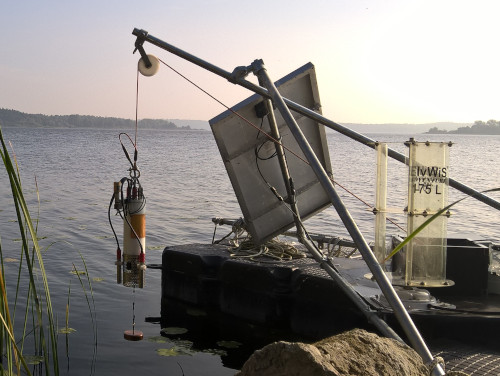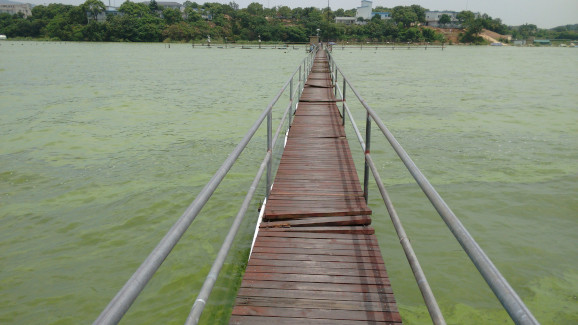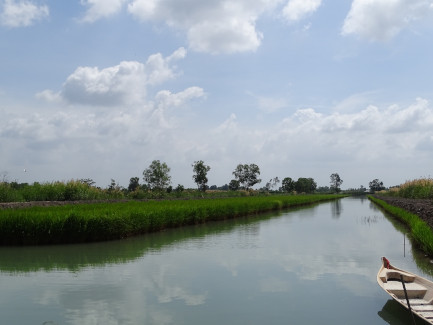Scientific background: Lake and river systems and their interaction with adjacent groundwater are amongst the most precious and indispensable systems for society development and human life. They provide drinking, process and irrigation water, are important transport routes, allow producing renewable energy and naturally fertilize soils during flooding. However, water bodies are threatened by overuse, severe anthropogenic input of various pollutants or nutrients and intensive building of dams. We have a broad range of analytical tools and self-developed monitoring devices to serve this field, starting with general water quality issues, eutrophication, particle dynamics or groundwater salinization to land-sea element flux or land subsidence studies. We are mainly interested in investigating spatio-temporal variations in physico-chemical parameters, hydro(bio)chemistry, isotopic signatures as well as particle geochemistry and mineralogy.
Our strength and some analytical challenges
- Trace element and isotope analytics in all kinds of water matrices, e.g. in salinized aquifer systems.
- Partitioning of metals in truly dissolved, colloidal and particulate fractions as basis for improved understanding of element transport in natural and anthropogenic systems
- Continuous monitoring of parameters indicative of eutrophication and water quality deterioration like turbidity, chlorophyll activity etc. to design early warning systems.
- Analysis of geochemistry and mineralogy of particulate and suspended matter directly on filters using XRF
Analytical possibilities
Current research topics and projects
-
Development of monitoring technologies to study dynamics of water quality in Lake Taihu, China (SIGN-DYNAQUA)
-
Development of a smart depth profiling in situ and online multi-sensor buoy system to monitor water quality conditions, as well as algae contents, diversity, and vitality (WAQUAVID).
-
Dynamics of ground- and surface water quality caused by intensive land subsidence, climate- and land use changes in the southern Mekong Delta, Vietnam (ViWaT)
-
Characterization of suspended particles in the Seo Ho River and their influence on the hydroabrasion of pumps and concrete structures and the water quality (KaWaTech Solutions)
Selected publications
- Yang, J., Holbach, A., Wilhelms, A., Qin, Y., Zheng, B., Zou, H., Qin, B., Zhu, G., Norra, S. 2019. Highly time-resolved analysis of seasonal water dynamics and algal kinetics based on in-situ multi-sensor-system monitoring data in Lake Taihu, China. Science of the Total Environment 660, 329-339.
- Holbach, A., Bi, Y., Yuan, Y., Wang, L., Zheng, B., Norra, S. 2015. Environmental water body characteristics in a major tributary backwater of the unique and strongly seasonal Three Gorges Reservoir, China. Environmental Science: Processes & Impacts 17, 1641-1653.
- Holbach, A., Wang, L., Chen, H., Schleicher, N., Hu, W., Zheng, B., Norra, S. 2013. Water mass interaction in the confluence zone of the Daning River and the Yangtze River - a driving force for algal growth in the Three Gorges Reservoir. Environmental Science and Pollution Research 20, 7027-7037.
- Eiche, E., Hochschild, M., Haryono, E., Neumann, T. 2016. Characterization of recharge and flow behaviour of different water sources in Gunung Kidul and its impact on water quality based on hydrochemical and physico-chemical monitoring. Appl. Water Sci 6, 293-307. DOI 10.1007/s13201-016-0426-z.



